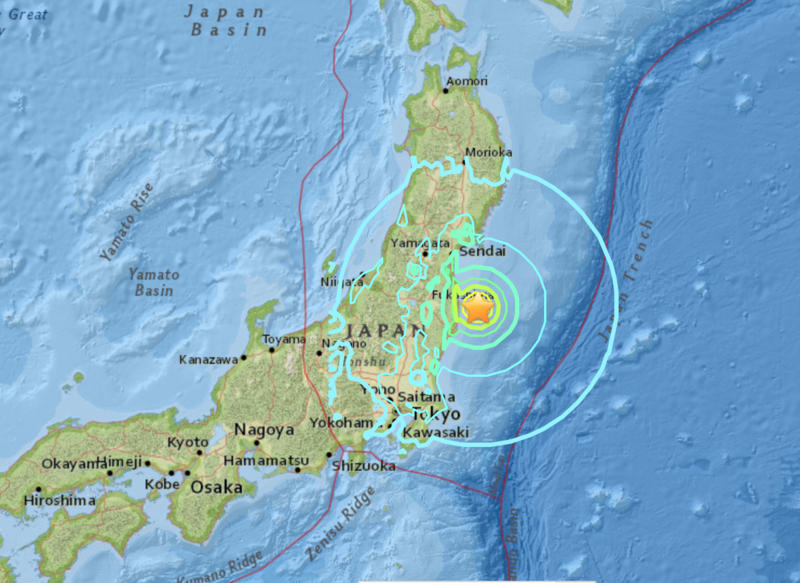Scientists believe a significant earthquake was reported off the coast of Japan, near Fukushima, the location of a nuclear disaster precipitated by a quake a decade ago.
5.5 Magnitude Quake

The 5.5-magnitude quake struck off the coast of Fukushima Prefecture in northeastern Japan on Sunday, but no damage or casualties were reported. A tsunami warning was not issued.
The epicenter of the quake, according to the USGS, was 82 miles southeast of Shizunai, Japan, at a depth of 19 miles. The Japanese Meteorological Agency raised the magnitude to 6.0.
After the earthquake, the JMA warned locals about the danger of landslides.
Because Japan is located in the seismically active "Pacific Rim of Fire" area, earthquakes occur often.
A 7.3-magnitude earthquake hit off the shore of Fukushima in March, killing one person and wounding scores of others.
The 2011 earthquake caused a tsunami, which resulted in an accident at the Fukushima Daiichi Nuclear Power Plant.
Earthquakes

When two slabs of the ground abruptly move past one another, an earthquake occurs. The fault or fault plane is the surface where they slide. The hypocenter is the point under the earth's surface where the earthquake begins, while the epicenter is the position directly above it on the earth's surface.
Foreshocks can occur during an earthquake. These are lesser earthquakes that happen in the exact location as the next big earthquake. Scientists can't identify if an earthquake is a foreshock until the main event occurs. The mainshock is the greatest and most powerful earthquake. Aftershocks always follow mainshocks. These are lesser earthquakes that strike around the epicenter of the mainshock. Aftershocks can last for weeks, months, or even years after the mainshock, depending on the size!
How Earthquakes Shakes the Land
The inner core, outer core, mantle, and crust are the four primary layers of the planet. A thin skin covers the surface of our planet, consisting of the crust and the top of the mantle.
But this skin isn't all one piece; it's made up of several sections that cover the earth's surface like a jigsaw. Furthermore, these puzzle pieces continue to move about, sliding past and colliding with one another. These jigsaw pieces are tectonic plates, and the plates' borders are known as plate boundaries. The plate boundaries are made up of many faults, and most earthquakes occur on these faults across the planet. Because the plates' edges are rough, they become stuck as the remainder of the plate moves. When the plate has shifted far enough, the margins of one of the faults unstick, and an earthquake occurs.
The energy that would ordinarily force the blocks to glide past one another is stored as the edges of faults are held together, and the remainder of the block moves. All of the stored energy is released when the force of the sliding blocks eventually overcomes the friction of the fault's sharp edges, and it unsticks. Like ripples on a pond, energy spreads outward from the fault in all directions as seismic waves. Seismic waves shake the earth as they travel through it, and when they reach the surface, they shake the ground and everything on it, including our homes and ourselves!
Drop, Cover, and Hold
Safety tips during an earthquake:
Before the earthquake pushes you down, DROP down on your hands and knees. This stance keeps you from falling while still allowing you to maneuver if necessary.
COVER your head and neck (and, if possible, your entire body) with a strong table or desk. If you don't have access to a shelter, lie down against an interior wall or low-lying furniture that won't fall on you and cover your head and neck with your arms and hands.
HOLD ON to your shelter (or your head and neck) until it stops shaking. Prepare to relocate your shelter if the earthquake causes it to shift.
Related Article : Experts are Studying the "Biggest Earthquake in Human History"
For similar news, don't forget to follow Nature World News!
© 2026 NatureWorldNews.com All rights reserved. Do not reproduce without permission.





